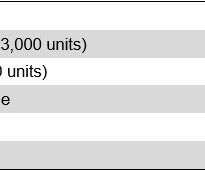Normal costing definition
Accounting Tools
FEBRUARY 11, 2024
This approach applies actual direct costs to a product, as well as a standard overhead rate. It includes the actual cost of materials, the actual cost of labor, and a standard overhead rate that is applied using the product's actual usage of whatever allocation base is being used (such as direct labor hours or machine time).































Let's personalize your content